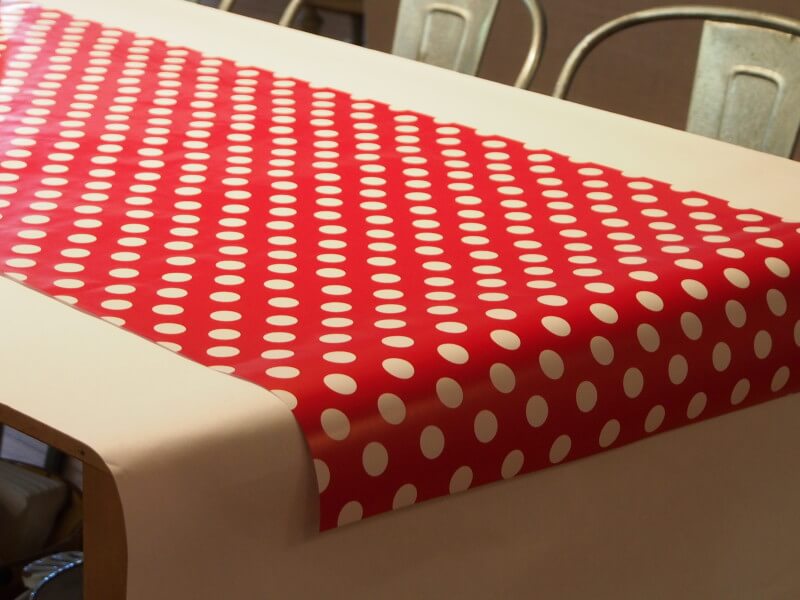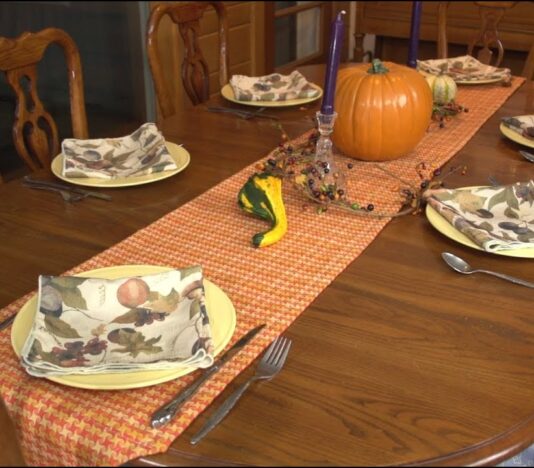A table runner is a decorative style table runner that extends the length of the table surface and helps to enhance the aesthetic appearance. The table runner can be made from materials such as cotton, wool, linen, jute, embroidery, lace, printed fabric, satin and suede.
Some people also use colored vinyl based fabrics. Often decorated with flowers, foliage, embroidery, decoupage or sewing paper images, they are used to adding color and design to the table surface. Some people also use table runners to protect the table from the heat of the hot plate, or to hide an old or damaged surface or finish. Table runners are also used to signal and highlight the decor of a certain area of the room.
TableRunner | What is your origin?
The use of tablerunners emerged in 18th century Europe, and was at that time a way to highlight antique furniture. At that time, the fashion for furniture was solid and neutral colors. In this way, a tablerunner acted as an accent and colorful addition that served as the big detail in the center of the table.

This style became popular in other parts of the world, particularly in Asia. In many cultures, they are perceived as related to prestige and good manners. In fact, they have become a way of showing social status.
During the 1980s, tablerunners gained prominence again, this time in department stores. They came to be used to decorate long tables used at events and receptions. Tablerunner modernization has become more fun and practical, allowing people to create their own decorating style.
They also serve functional purposes, such as protecting the surface of tables and absorbing impacts. The materials used for tablerunners are usually cotton, silk and linen.
TableRunner | Step by step to do it yourself
1. Buy or reuse the fabric you want to use. You can use just about any type of fabric, from cream and neutral to colored, patterned, or woven. If you want to make the runner out of waterproof fabric, you can buy water resistant acrylic fabric.
2. Measure and cut the fabric. You will need to measure 13 to 60 inches wide and 37 inches long. Separate the completely straight parts to make one side longer and one smaller.
3. Use the sewing machine to sew both sides of the runner. If you are new to the sewing machine, there are some helpful tutorials to help you learn the basics.
4. If you prefer, decorate the ends with cut-out strips of fabric, fringes or overlays.
5. If you want a water or moisture resistant tablerunner, you should sew by flattening the sides of your runner with a water resistant zipper.
6. Sew your runner onto the sewing machine. Sew the sides, leaving an opening to go back.
7. Turn the tablerunner over and press the edges so they are straight.
8. Fill the tablerunner with pillows, towels, or whatever you like.
9. If you want, you can make a velvet type cushion for your tablerunner as a seat cushion. Just cut three straight pieces of the desired fabric, fold two of these in a straight line, and then join them together with a straight seam or professional sewing secrets.
TableRunner | What are the benefits of doing a Mini Runner?
1. An important advantage to using a Mini-Runner is that it is much easier and more compact to transport than an entire tablerunner. A Mini-Runner is also much easier to fit perfectly to the table as you don’t have the long corners to worry about.
2. Mini-Runners are also much cheaper than full tablerunners, which means you can buy more of them to theme your decor. They are also simpler to customize, such as 3D printing or sewing to create your own design.
3. Mini-Runners offer versatility as they are so small that they can be used on different table sizes and different furniture. They are perfect for decorating weddings, business dinners and other events.
4. The Mini-Runner makes it easy to fold your jewelry and keep your decor clean. They are easier to clean and wash than an entire tablerunner.
Final considerations
TableRunner is a very useful tool for any database developer as it simplifies and automates complex and manual tasks. In addition, Tablerunner helps save time and effort as it allows tasks to be performed more accurately and faster.
TableRunner can be integrated with different database systems, which makes it even more versatile and efficient. All in all, TableRunner is an extremely useful tool that helps developers save time and perform complex tasks with greater accuracy and agility.

Leave a Reply